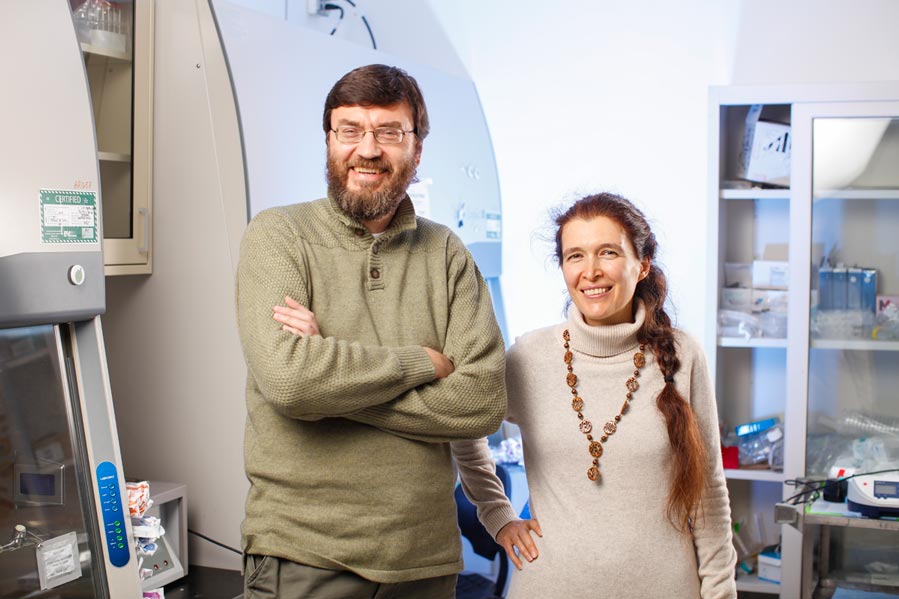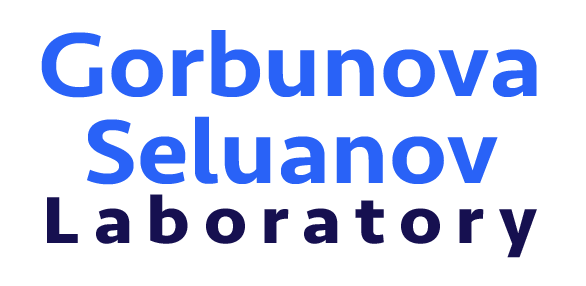
With Fresh Perspectives, Research Team Studies Needs of Older Patients
This article appeared first in Dialouge Magazine.
Wilmot Cancer Institute’s “cancer and aging” scientific team could be a model for marrying distinctly different perspectives into one big project.
The team’s secret weapon isn’t even a scientist; she’s Beverly Canin, a sharp, energetic 82-year-old breast cancer survivor from the Hudson Valley region of New York. Canin became a patient advocate after dealing with her own diagnosis, aiding women who needed help navigating the health care system or talking candidly with their doctors. She is as comfortable asking questions as she is listening and learning, qualities that eventually earned her an invitation to become a reviewer for cancer research grants at the U.S. Department of Defense.
As her interest in research expanded, Canin started regularly attending the biggest gathering in the world for oncologists, the American Society of Clinical Oncology (ASCO) annual meeting.
In her initial visits to ASCO, Canin says she noticed something odd: few people, if anyone, seemed to be studying aging as it relates to cancer, a topic of personal interest as she grew older.

Canin found an exception, though, when she met Supriya Mohile, M.D., a geriatric oncologist at Wilmot who, during her early years of medical training, was struck by the same blaring gap in research. Their mutual interest sparked a long relationship that continues to flourish.
“I walked up to Supriya and others at ASCO and said, ‘if you ever think there’s a way I can be helpful, I’d love to talk,’ “recalls Canin. Subsequently, Canin was invited to join a national coalition of pioneering geriatric oncology researchers.
“It’s been a big learning curve for all of us,” Canin says. “But for researchers to accept an advocate like myself as a peer is hugely rewarding.”
Mohile was similarly inclusive when she began assembling a new research team at Wilmot to expand the mission of improving disease outcomes for older adults. The voices of patients and advocates like Canin were loud and clear—the field is still in need of a lot of information, and fast. The Wilmot team is working toward that goal with diverse perspectives from molecular biologists, geriatricians, oncologists, and behavioral scientists. They’re taking on a wide variety of investigations all under the umbrella of “cancer and aging,” including studies of biomarkers for aging, the way aging cells respond to the stressful assault of cancer treatment, and how to use decision-making tools to help older patients prioritize their concerns and make trade-offs when it comes to treatment.
The team’s objective is to win a Program Project Grant from the National Institutes of Health, a prized award given to a group of collaborating scientists intent on solving a well-defined problem. As a start, the Wilmot team recently received a pilot grant for $100,000 (from Wilmot donor funds) to seed the gathering of preliminary data needed to apply for the program award, with Mohile as the principal investigator.
“We’ve made a lot of progress in this field in 10 years and in the next 10 years we’ll have many more answers,” says Mohile. “But structure is still lacking and there is still a not enough evidence to influence clinical care. We need ways to accurately predict what will happen to older patients when we give them cancer treatments.”
“Biological” Age vs. “Chronological” Age
Older adults traditionally have been excluded from clinical trials, usually due to co-existing medical conditions that make them ineligible. The result is a lack of national consensus to provide evidenced-based treatments for this fast-growing population. Most community oncologists are poorly prepared to cope with the complex care needs of older cancer patients, Mohile wrote in a recent review article published by the journal Cancer.
The facts underline the need for more research. By 2020, two-thirds of all cancer survivors are expected to be at least 65 years old. By 2030, 70 percent of all cancer patients are expected to be older than 65. Living longer has created new categories of old: “older old’ (70-80 years), and “oldest old” (80+ years).
Dirk Bohmann“The problem with cancer and aging is that normal issues associated with aging are layered on top of cancer,” says Dirk Bohmann, Ph.D., Senior Associate Dean for Research at the University of Rochester Medical Center and a molecular biologist who is collaborating on the project. “You really have to consider the specific circumstances of each individual patient.”
The true health status and age of older cancer patients is not always clear, he says, even when taking into account birth dates and routine measures such as blood pressure, gait, and cognitive function.
“Sometimes you see an 80-year-old rowing on the Erie Canal, looking as healthy as a much younger person, while another 80-year-old might be near death,” adds Bohmann, the Donald M. Foster MD Professor of Biomedical Genetics. “It’s tricky to get a good assessment of a patient’s biological age without the appropriate data.”
To do this, three different investigations will look at aging cells in new ways.
Michelle Janelsins, Ph.D., an assistant professor in the Cancer Control and Survivorship Program at Wilmot, is leading the collaborative efforts between basic and translational scientists on the team.
Her own investigation will focus on telomere length and epigenetic changes in older breast cancer patients receiving chemotherapy, to see if these DNA markers are a viable, objective predictor of frailty as opposed to chronological age (or what the calendar says). Telomeres are DNA sequences at the end of chromosomes; they have been compared to the small plastic or metal coverings at the end of shoelaces to keep them from fraying. Telomere length is a known biomarker for aging, with shorter telomeres often associated with early death, according to several prior studies.
Epigenetic changes also occur to DNA to alter gene expression related to aging. Scientists generally believe that cancer patients age at an accelerated rate, but no scientific studies have correlated telomere length and epigenetic aging to frailty or age in cancer patients. Janelsins has been collaborating with epigenetics researchers at the Roswell Park Cancer Institute in Buffalo, and their preliminary work suggests that epigenetic age is more highly correlated to actual age than telomere length—meaning that it might be a better indicator of a person’s biological age and therefore could be used as a biomarker in cancer outcomes such as frailty.
For his part, Bohmann is investigating what happens when aging cells must cope with chemotherapy and other treatments. Under the best of circumstances (say, in a healthy 20-year-old), cells rapidly activate antioxidants to combat a stressful assault, whether it’s from chemo, an infection, or disease. But the genes that regulate antioxidants become “rusty” with age, Bohmann says.
Such disruptions can leave older adults with fewer natural defense mechanisms and make them more vulnerable to the side effects of chemotherapy. Conversely, a patient who is chronologically old but has maintained younger, fitter genes can usually tolerate chemotherapy better.
Bohmann is developing a reliable blood test to measure “biologic age” based on the genetic stress response observed in blood cells. In the laboratory, researchers expose cells collected from old and young breast cancer patients to chemotherapy and then measure how well the cells rally antioxidants. Researchers are also correlating the cellular stress response with other classic elements of frailty—such as dementia or a number of falls— which can be assessed independently. If a simple blood test proves to be accurate, doctors might be able to predict how well an older adult will tolerate treatment before it’s prescribed and tailor the treatment individually.
Another collaborator and biologist, Vera Gorbunova, Ph.D., the Doris Johns Cherry Professor of Biology and associate professor of Oncology at Wilmot, studies aging, DNA repair, and cancer. She and Bohmann direct the Rochester Aging Research Center on campus. For the Wilmot project, Gorbunova is focusing on a set of genes known to fuel chemotherapy complications in older patients. Called “genomic parasites,” L1 transcripts are particularly active in aging mice but can be repressed by antiretroviral medications commonly used to treat HIV patients, the Gorbunova lab recently discovered.
She’s testing whether the level of L1 transcription in a cancer patient’s blood can predict the ability to tolerate chemotherapy, and furthermore, whether elevated L1 might contribute to side effects such as “chemo-brain,” the mental fogginess that burdens many cancer patients. A short course of an antiretroviral drug might reduce chemotherapy side effects, she hypothesizes.
“It would help oncologists and patients enormously if we had objective biomarkers for aging,” Mohile says. “Biomarkers will let us know: If we give treatments to patients in the real world what happens? What does the evidence say?”
The Human Side
In the “real world,” older cancer patients also struggle with issues that have little to do with molecular aging. Like their younger counterparts, they may experience intense fear or misunderstandings with their doctors. But older patients also have some distinct needs, such as being able to express what they really want without feeling like they’re a burden.
Marsha WittinkMarsha Wittink, M.D., MBE, a primary care physician and researcher at the University of Rochester whose work focuses on improving health communication, recalls an episode of the “Jerry Seinfeld” comedy sitcom in which Elaine asks her doctor a lot of questions and then frets about being labeled “difficult.”
Cancer patients may avoid asking certain questions because they fear it will change the way their oncologist views them, Wittink says. They worry that their lives teeter on the actions of their doctors, and they want to leave a good impression. The role of anxiety and all of its manifestations–from treatment anxiety to fear of death–can be paralyzing for many patients, adds Paul Duberstein, Ph.D., a UR psychologist and professor of Psychiatry, Medicine, and Family Medicine.
When older adults are not fully informed and their perspective is not understood, it can lead to unnecessary and toxic treatments that are unlikely to prolong life and could possibly reduce the quality of the time they have left with family, he says.
“The big unknown, what we haven’t asked older patients is: What is it that you really want?” Wittink says. Too often, health care providers make assumptions without empowering patients to ask the difficult questions. “Unpacking this information is so important. And the issues are more pressing for older people, who may have other health problems and varying degrees of family support.”
Wittink developed a decision tool for primary care doctors that she’s adapting exclusively for cancer patients. It consists of a short survey taken on an iPad, with questions designed to focus on health goals, and risks and benefits of treatment options. Older patients may want more information on how treatment will impact their brain function, mood, and independence. The software being used for this research project is similar to that which is used in consumer market research– allowing the respondent to make trade-offs in line with their personal preferences and values. For example: Are you willing to live with daily nausea if the treatment could significantly extend your life? Or would you rather live mostly symptom-free for the rest of your days?
Wittink plans to recruit patients from Mohile’s specialized geriatric oncology clinic, based at UR Medicine’s Highland Hospital, to test the decision tool in a randomized clinical study. “We believe the questions will help people feel a little bit more comfortable opening up,” she says.
Paul DubersteinDuberstein is planning a separate research project to assess the role of anxiety among older patients and physicians in terms of treatment decisions, disease outcomes, and quality of life.
Including physicians in the study is unique, Duberstein says. His concern is that sometimes their anxiety influences doctors to offer more treatment, even when it’s not warranted, because they don’t want to feel as if they’re “abandoning” their patients.
Other research has shown that a doctor’s personality influences patient care—for example, more risk-averse physicians tend to order more tests—but no one has studied this in the high-stakes cancer setting.
“Our goal is to help cancer patients obtain the best quality of life they can,” Duberstein says. “Not only do patients need tools to deal with anxiety, but doctors need the skills to handle very delicate situations. They should be able to say ‘no’ while being incredibly careful that they don’t unwittingly send a message that we’re ‘giving up’ once we run out of treatment options.”
Until scientists come up with a cure for cancer, he adds, the doctor-patient relationship is perhaps the most powerful part of a patient’s cancer journey.
Canin, the patient advocate, couldn’t agree more. In fact, in 2015 she delivered a talk at the ASCO annual meeting giving the patient perspective on what “value in patient care” means to patients. Citing results from two surveys of people with advance breast cancer, her punchline was: For cancer patients, “value” isn’t primarily based on money or cost of care—but rather the relationship between patient and doctor. Canin received a standing ovation from the doctors in the audience, Mohile says.
“There’s no way we could do this type of research without having people with different perspectives guiding us and taking part,” Mohile says. “Beverly, among others, has really opened my eyes: What should I look at first? What’s the most important area to focus on from all of my data? She’s made me realize that it’s not all about the researchers.”
“Having said that,” Mohile adds, “it’s also very important to have a diverse and talented research team to explore the many aspects of this growing field.”
Lydia Fernandez | 1/9/2017



